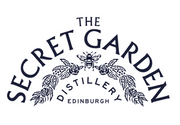What Exactly is Gin?
By Mark Boswell, Head Distiller
I’m currently in the stillroom, tweaking one of our recipes and am considering the question, ‘what is gin?’ I’d certainly have answered that question differently when I first came across it thirty years ago; to me, gin was a drink for old ladies. I don’t think I’d even tried a gin & tonic until I was in my late twenties, when my local pub in Buckinghamshire offered a double G&T as a refreshing sunny beer garden drink. Looking at the current distillation which has 13 fresh botanicals in, it’s staggering just how much it’s changed in such a relatively short time.
The Technical Definition
Gin, according to Regulation (EU) 2019/787 of the European Parliament, is a ‘juniper-flavoured spirit drink produced by flavouring ethyl alcohol of agricultural origin with juniper berries (Juniperus communis) [1]. This goes some way to explain the dizzying array of craft gins available today; as long as the taste is predominately juniper, the distiller can play with a huge range of botanicals that complement this remarkable spirit.
Bathtub Gin
There are a number of established styles of gin available and here at the Secret Garden, we make them all. Compound gin is the simplest: known colloquially as Bathtub Gin (a name which dates back to 1920s Prohibition where moonshiners would mix it in their bathtubs) this gin is produced by steeping juniper and other botanicals in neutral spirit. Our Apothecary Rose is a good example of this; our base gin is infused with petals and distilled waters to provide colour and flavour.
London Dry Gin
Distilled gin is the category which describes most of our products. For this, the neutral spirit is distilled over steeped juniper with the additional botanicals contained in a basket in the still; the volatiles are removed using vapour extraction and the resulting concentrate will come off the still at between 79-80% abv. This spirit is then diluted and bottled and this is known as a London gin or a London Dry; all the botanicals must be present throughout the distillation and nothing can be added afterwards except water or more spirit [2]. This gin is colourless and unsweetened, our Wild gin (which I’m tweaking as I write) would be an example of this.
Plymouth Gin
One style that we don’t do much of is Plymouth Gin, despite it losing its Protected Geographical Indication status in 2015 that stated the gin must only be made in Plymouth. A slightly sweeter gin than London Dry, this places more emphasis on root botanicals such as orris and angelica and tends to be less junipery. We do make these gins for some of our clients but we tend to just categorise them as ‘London Dry but with less juniper’.
Old Tom Gin
Another style which we’ve ended up resurrecting is Old Tom Gin, a much sweeter style of gin that’s closer in flavour to the original Dutch genever recipe from the 1600s. We discovered a botanical called Stevia rebaudania growing in the garden which is a natural sweetener and just had a play with distilling it; the resulting spirit is a real marmite gin that you’ll either love or hate.
Our Speciality
And then we consider our Gin Club. Each month we’ll let our hair down and use some of the amazing plants we grow to come up with a gin that we haven’t done before. You’d think we’d have run out of ideas by now but no – we still haven’t repeated anything yet! We’ve done gins with wine grapes, gins with strange-coloured petals, gins with seaweed, gins with honey, and gins with distilled plants that I’d never even heard of. All wildly different, all unique, and yet all gins. So to answer the question, what is gin, I’d say that it’s an amazing and versatile spirit that contains an abundance of variety and is a great drink for a sunny day. I think I’ll get away with that!
[1] https://www.legislation.gov.uk/eur/2019/787
[2] https://www.legislation.gov.uk/eur/2019/787







